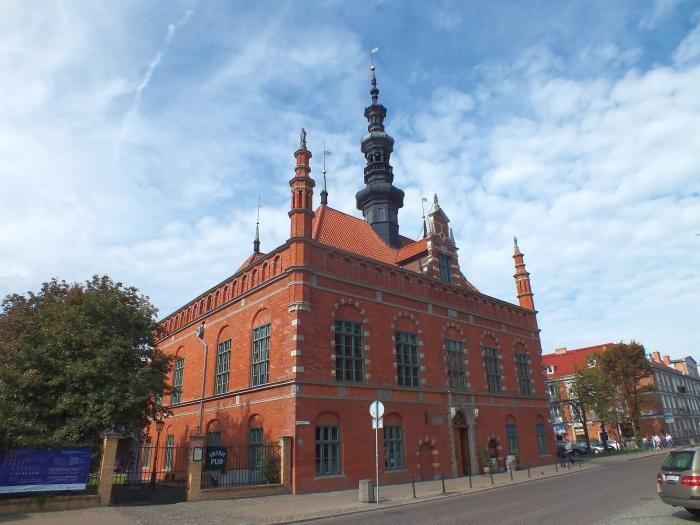The seat of BSCC is the 400-year-old Old Town Hall, which is one of the few historic buildings in Gdańsk that survived the war damage. It is supposed to have been designed by Anton Van Obberghen. The Town Hall was built in 1587–1589 for the the Old Town Council of that time.
The Old Town Hall building is not a well-known Gdańsk landmark, such as the Crane or Neptune Fountain, nor does it dominate its panorama like St. Mary’s Church. However, because of a combination of past circumstances, the small building in Korzenna Street has become one of the most precious monuments in Gdańsk
Fortunately, unlike the major part of the historical city centre, it was not destroyed in 1945, and still boasts the original interiors and construction. Nevertheless, the building erected in the late 16th century has undergone many changes in its 400-year history.
Before 1910 the building was used as a court, and afterwards several offices were located here. The conversion into offices necessitated a major reconstruction. At that time, many valuable objects salvaged from the town houses were transferred to the Town Hall interior: plafonds, paintings, a fireplace and fragments of portals. Conservators treated the Town Hall as a kind of box for storing the most precious pieces of Gdańsk art. This resulted in a unique combination where unique objects dating back to the 16–18th century were integrated with the historic structure. The beauty of the interiors is highly appreciated by artists, musicians, researchers and numerous participants involved in the numerous local and international projects held in the Old Town Hall.
We encourage everyone to visit our headquarters. You can find here the images of ancient deities particularly admired by the patricians of Gdańsk: Juno – the goddess of fertility, Neptune – the god of the sea, and the guardian of trade Mercury; see the Passion of Christ inspired by the works of Rubens and Rembrandt, identify the allegories of the virtues such as Temperance or Justice, highly appreciated by the Lutheran bourgeoisie, look at the unique series of images of the twelve ancient oracles – sibyls, prophesying the end of the world, which was then predicted to happen in the 17th century.

